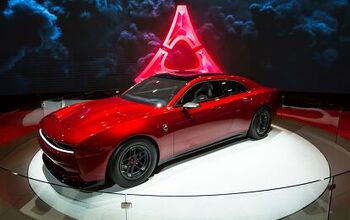Keep Your Driver, Uber Tells Select Customers

Amid widespread suspicion of other human beings and the general sense that public transit is a terrible way to travel when COVID-19 lurks everywhere, Uber has rolled out a feature offered overseas to some of its U.S. customers.
Instead of hailing a ride to the grocery store (or what have you), then dialing up another for the ride back, what if you could just keep your driver for the entire trip — like some sort of big shot?
That’s what Uber Technologies plans to offer in select U.S. cities, Reuters reports.
Before now, the hire-by-hour service was only available to customers in certain cities in Europe, Africa, the Middle East, and Australia. Unlike Uber’s regular ride-hailing service, this feature comes with a fixed cost: $50 an hour.
“Within the Uber app, you’ll be able to request this trip as you would any on-demand ride, while setting multiple stops as needed throughout your journey,” explained Niraj Patel, the company’s director of rider operations. “The cost is $50 per hour with mileage overage varying by city, and riders can book in hourly increments. Once requested, you’ll be matched with a driver who has a more spacious and newer vehicle make / model of cars that are eligible for Uber Comfort.”
Patel said the company is making the hourly option available for those who “anticipate needing additional flexibility when taking care of essential tasks, and for drivers so that they could access an additional earning opportunity.”
Having just one driver, perhaps driving a larger vehicle, reduces a rider’s exposure to other (potentially infected) individuals. For the driver, it means a similarly luckier roll of the dice, though if either of the two are infected, they’ll have extra time with which to transmit the virus. Nothing’s perfect in today’s new world. That said, both driver and rider, as of May 18th, are required to wear a mask or face covering.
As lockdown orders fell into place across the U.S. earlier this spring, Uber suddenly found itself with far fewer riders. A similar pattern preceded that in overseas locales. Ridership plunged 80 percent, globally, in April, though the company says things are now on the upswing. A move like this could tempt some riders to return to their Uber-using ways.
The hourly service rolls out in Atlanta, Chicago, Dallas, D.C., Houston, Miami, Orlando, Philadelphia, Phoenix, Seattle, Tacoma, and Tampa Bay on Tuesday, June 2nd.
[Image: BigTunaOnline/Shutterstock]

More by Steph Willems
Latest Car Reviews
Read moreLatest Product Reviews
Read moreRecent Comments
- Wolfwagen Pennsylvania - Two long straights, 1 medium straight, 1 super short straight and a bunch of curves all on one end
- Haze3 EV median weight is in the range of 4500-5500lbs, similar to the low end of full size pickup trucks and SUV's or typical mid-size PU's and SUV's. Obviously, EV Hummers and PU's are heavier but, on average, EV=PU or mid/full SUV is about right. EV's currently account for ~1% of the cars on the road. PU's account for 17% and SUV's count for over 40%. If we take out light SUV's, then call it 30% SUV or so. So, large-ish PU's and SUV's, together, account for ~50% of the US fleet vs 1% for EV's. As such, the fleet is ALREADY heavy. The problem is that EV's will be making the currently lighter 50% heavier, not that PU/SUV haven't already done most of the damage on avg mass.Sure, the issue is real but EV responsibility is not. If you want to get after heavies, that means getting after PU/SUV's (the current problem by 40-50x) first and foremost.
- Redapple2 Telluride over Acadian (sic-tip cap-canada). 1 better car. 2 60 % us/can content vs 39 THIRTY NINE for an "American" car. 3 no UAW labor. Smart people drive Tellurides. Not so smart for the GMC. Dont support the Evil GM Vampire.!
- Theflyersfan My dad had a 1998 C280 that was rock solid reliable until around 80,000 miles and then it wasn't. Corey might develop a slight right eyelid twitch right about now, but it started with a sunroof that leaked. And the water likely damaged some electric components because soon after the leaks developed, the sunroof stopped working. And then the electrical gremlins took hold. Displays that flickered at times, lights that sometimes decided illumination was for wimps so stayed home, and then the single wiper issue. That thing decided to eat motors. He loved that car but knew when to fold the hand. So he bought a lightly used, off lease E-class. Had that for less than two years before he was ready to leave it in South Philly, keys in the ignition, doors unlocked, and a "Take it please" sign on the windshield. He won't touch another Benz now.
- Detlump A lot of people buy SUVs because they're easier to get in and out of. After decades of longer, lower, wider it was refreshing to have easier ingress/egress offered by an SUV.Ironically, the ease of getting in and out of my Highlander is very similar to my 56 Cadillac.


































Comments
Join the conversation
Ha! Only an Uber noob would fall for this. Riders have caught on that they can just put in the multiple stops, and many drivers will just wait and wait, even though riders are asked to keep stops to 3 minutes. Why would a rider pay $50/hour when they can work the system and get a driver for $.25/minute or $15/hour?